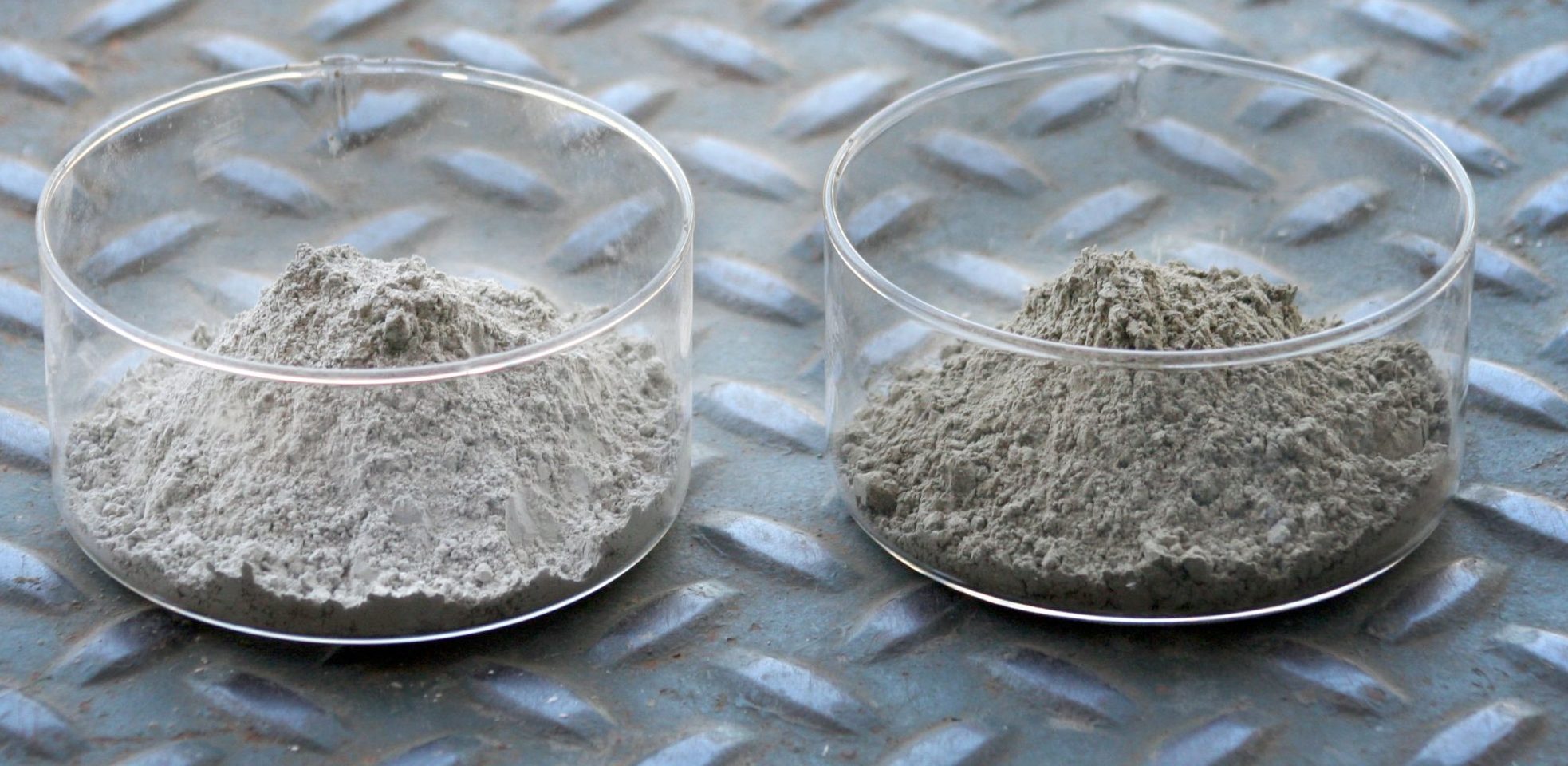LCA draws sharp Sublime Cement, C150 Type I carbon contrast
Sources: Sublime Systems, Somerville, Mass.; CMCM staff
A screening life cycle assessment (LCA) validates how Sublime Systems’ low temperature, electrolysis-enabled processing of calcium-bearing feeds yields a concrete-grade binder whose global warming potential (GWP) is less than one-tenth that of a typical portland cement. The most widely referenced metric in environmental product declarations, GWP indicates carbon dioxide emissions and is expressed as kilograms per metric ton equivalent (kgCO2/mt). California-based Climate Earth, a leading EPD provider for cement, aggregate and concrete producers, calculated a Sublime Cement GWP of 72 kgCO2/mt, a stark contrast to the 922 kgCO2/mt GWP indicated in the current EPD Portland Cement. That 2021 document reflects data the Portland Cement Association collected from 56 U.S. plants.

Sublime Cement (left) and portland cement.
Photo: Nathan Eisenberg
Climate Earth conducted the Sublime Cement LCA in conformance with ISO 21930, Sustainability in buildings and civil engineering works — Core rules for environmental product declarations of construction products and services. The firm’s cradle-to-gate screening LCA leverages engineering estimates of Sublime Systems’ full scale commercial production process. Remaining CO2 or equivalent emissions in the GWP figure were largely related to the mining and transportation of feedstocks and waste and wastewater treatment—processes that are primarily upstream and downstream of Sublime’s core manufacturing innovations. The screening LCA also showed drastically reduced acidification and eutrophication potentials without increased water consumption, reflecting a lower environmental footprint and permitting timeline compared to ordinary portland cement.
In lieu of the high temperature phases attending portland cement production, Sublime Systems is advancing a fully electrified process for its namesake binder without requiring the use of fossil fuels or limestone. Its carbon-avoidance approach harnesses clean, renewable sources of electricity and a wide range of calcium materials to produce the same final hardened phase in concrete that the global construction industry requires.
“As our company developed this breakthrough process, we were mindful that the construction industry wouldn’t respond well to shining white knights with splashy in-house PowerPoints claiming they’re saving the world,” says Sublime Systems CEO and Co-Founder Leah Ellis, PhD. “Seeing is believing, and we are grateful to be partnering with Climate Earth, the leader in these critical analyses for the concrete industry. Apples-to-apples comparisons using rigorous industry-accepted standards are foundational to driving real climate solutions and giving our stakeholders confidence in Sublime Cement as a powerful decarbonization tool in their arsenal.”
“Sublime Systems has shown incredible rigor in specifying their manufacturing process, enabling our team to confidently quantify the environmental impact of their electrochemical cement manufacturing process,” adds Climate Earth CEO Chris Erickson.
Sublime Systems is engaging partners for its first major construction projects this quarter and actively planning its charter commercial facility, which will produce tens of thousands of metric tons of low-carbon cement per year.
Related articles
Sublime Cement performance measures up to ASTM C1157 standard
Electrolyzer-assisted cement production method draws $40M in venture capital